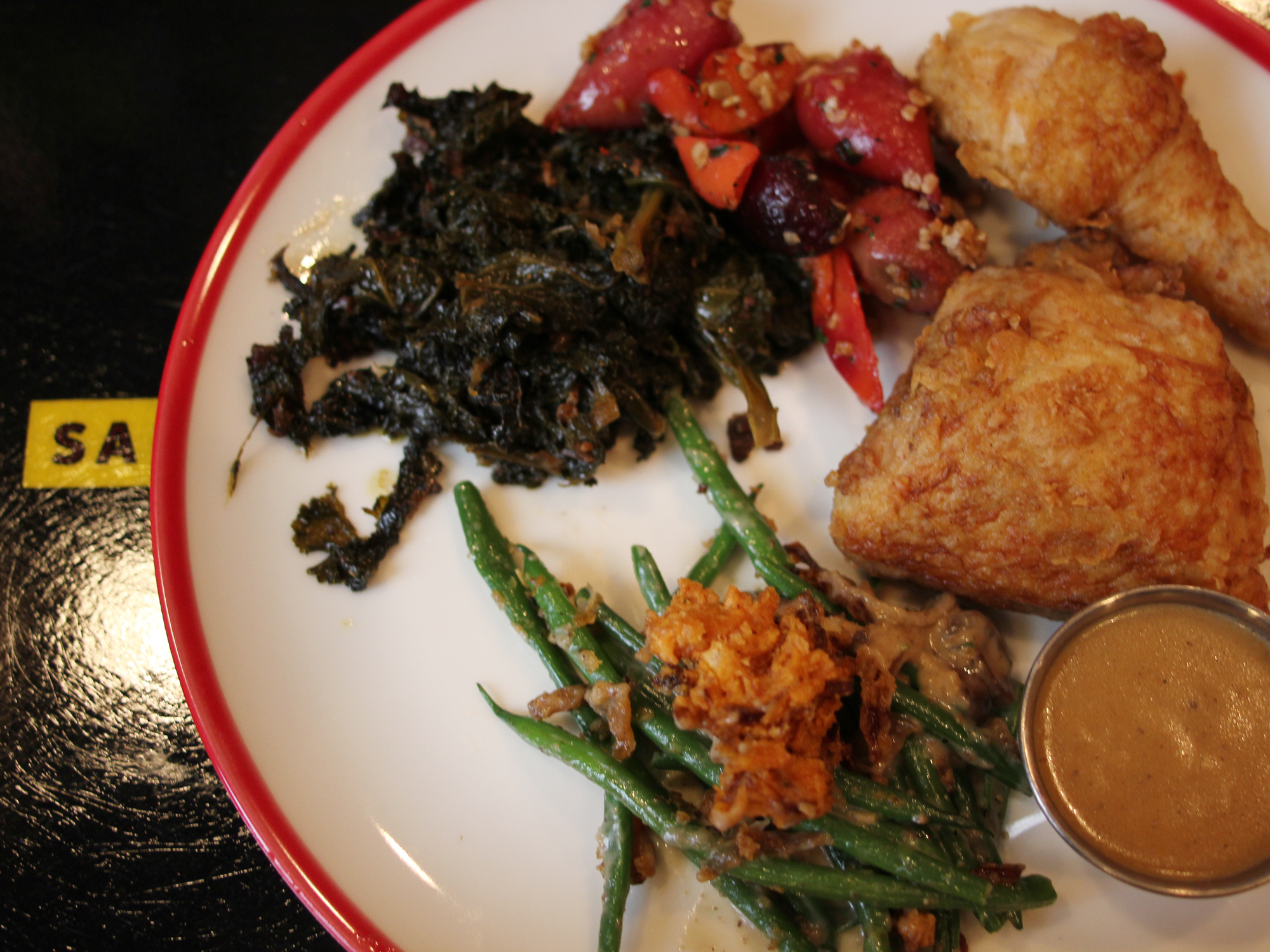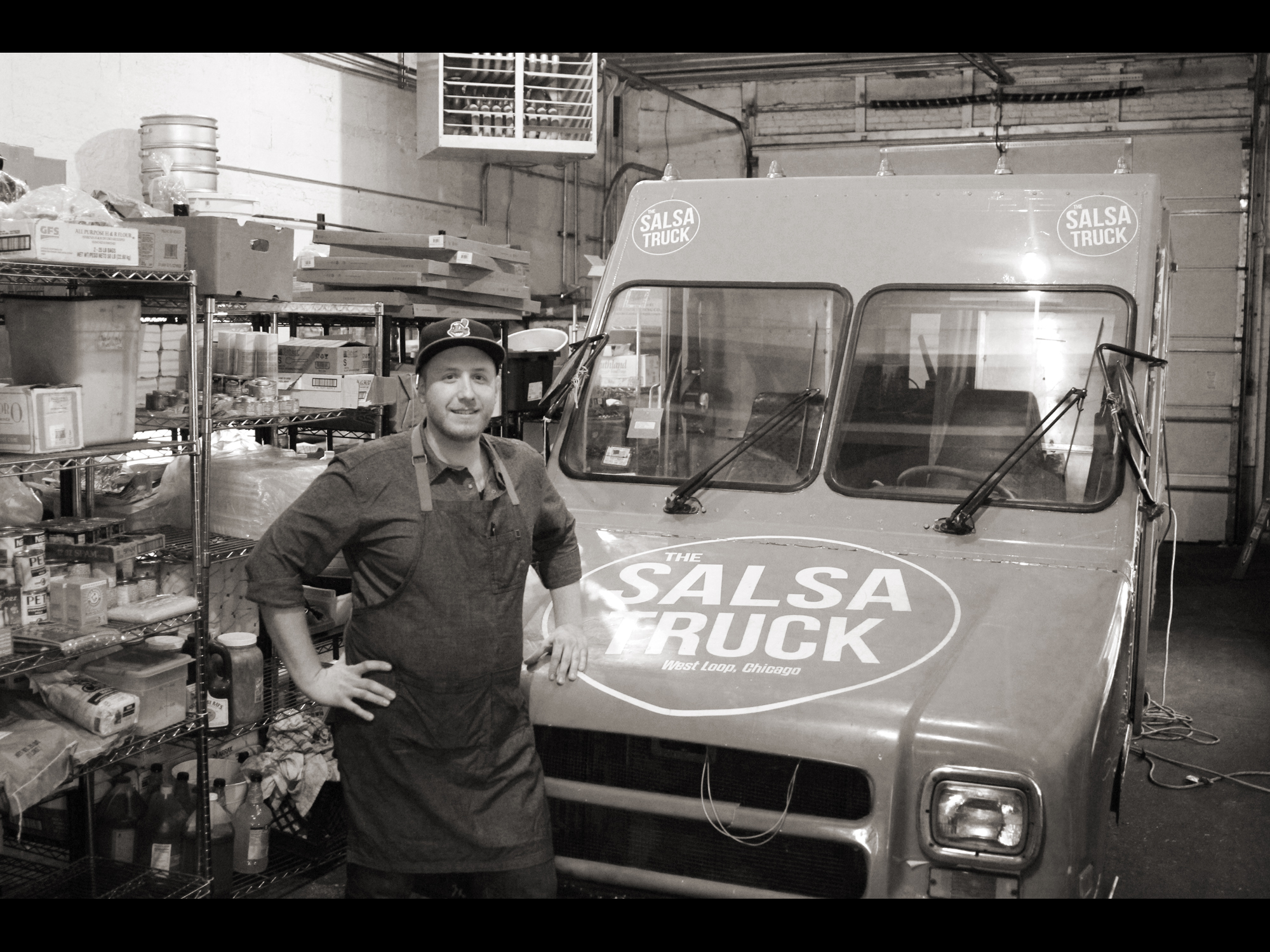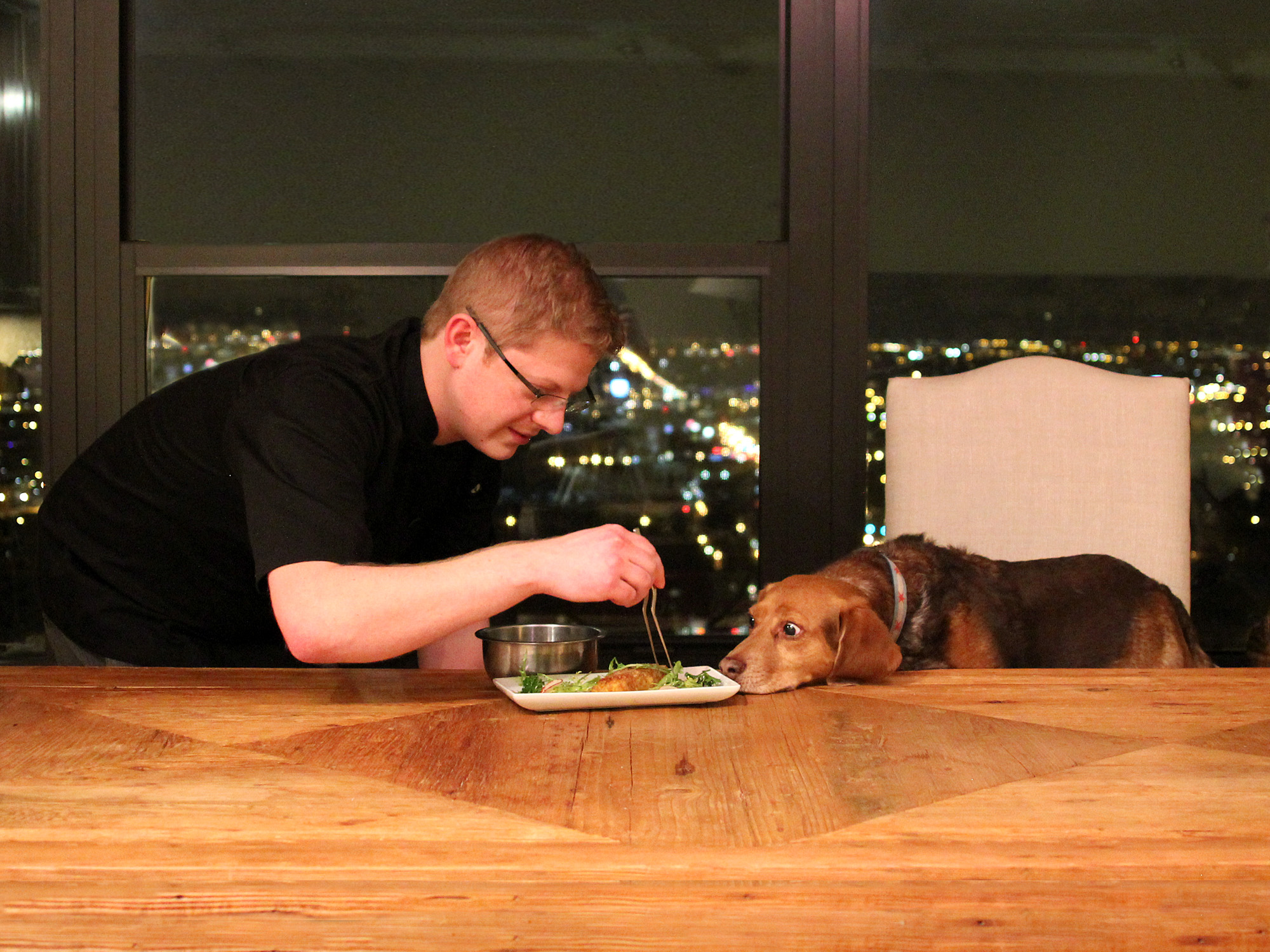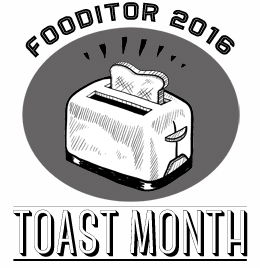
It’s Toast Month!
Join us as we kick off Fooditor’s first-ever Toast Month, devoted to all the ways that toast enters and intersects with our lives. Over the next 30 days we’ll be looking at white toast, wheat toast, rye toast, raisin toast, traditional toast, pomo toast, normcore toast, gender-fluid toast, the environmental costs of toasting and the ways our love of—some would say addiction to—toast shapes us and defines who we are, even as a new generation of toast-positive chefs redefine toast for a post-toaster world.
Today, in our first installment, we talk to a French chef in Chicago as he explores a kind of toast that steps entirely outside the paradigmatic conversation between what constitutes “toaster” and “toasted.”
ONE THING STRIKES ME AS I ENTER THE kitchen at Lincoln Park’s Chez Moi, the French restaurant owned by longtime Bistro 110 chef Dominique Tougne—I’m here to talk about toast, yet there’s no toaster anywhere in sight. They could be toasting by hand over a flame grill, but I don’t see any evidence of that, either. Could the surprise he told me about be that he’s introducing toasting at table side? “Where are the toasters, chef?” I ask.
“It is toast,” Tougne, a bald bear of a man who still has his thick Alsatian accent even after decades in Chicago, says, “but it is not toasted.” I have no idea what he’s talking about, and that’s when I know I’m in for a very special experience.
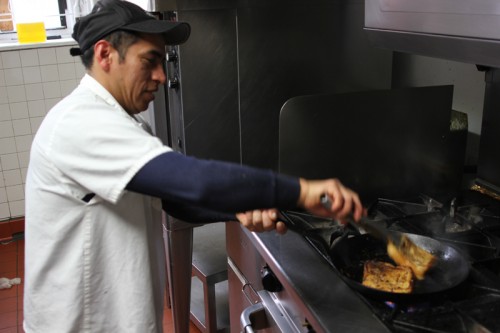
Meanwhile, in the corner of my eye, I see a cook frying a couple of pieces of bread. I’m about to ask what he’s making when Tougne continues.
“This is something I have been working on for many, many years. It is inspired by a dish that the old peasant women in my village used to make when I was growing up. All this time I have been working on it. I tried to do it at Bistro 110, but the bigwigs—” he pronounces it beegweegs— “they did not understand. They were not ready for it. I showed it to Tony Mantuano, and he called me mad.”
He stops. I wait for the revelation. Then, again, I notice the cook frying the pieces of bread. Bread… as in one of the key ingredients of toast. This isn’t something besides the toast that I’m here to write about. The bread in the pan… it is the toast. I feel like a character in Dune, finally getting the connection between the worms and the spice.
But before I can say anything, I notice that Dominique is not happy with the cook’s progress.

Trained in the traditional ways of French kitchens, Chef Dominique gently instructs his cook in some of the finer points of making toast a la Française.
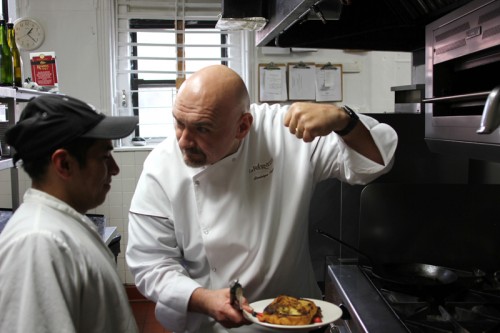
For his toast’s journalistic debut, Chef Dominique takes over the pan and starts fresh with two new pieces of bread. “When I was a boy in France,” he says, “my family raised veal on the side of a hill. Very steep. And I would go and climb the bushes and collect the eggs every morning. One egg would be dropped, or maybe two, and we would call that one ‘un oeuf du le roi du vache à la matin du soleil.’ The egg for the king of the cows of the morning sun. So now you understand, no?”
I didn’t and I wanted to ask him more, but by this point he had grown so intense in his approach to the bread cooking in the pan before him that I didn’t dare.
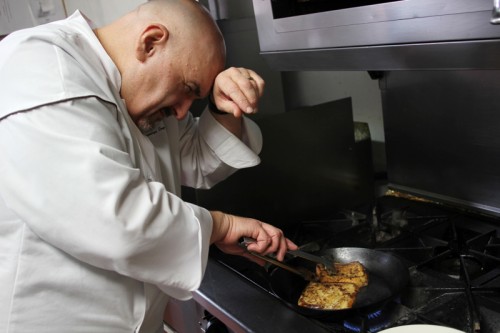

“We would cook the morning cow-king’s egg, and we would grill a piece of bread over the fire. This was how the old peasant women had always done it,” he said. “But I was never satisfied with an egg and a dry, burnt piece of bread. It did not have the élan. It did not have the esprit. Finally, one day, it came to me.”
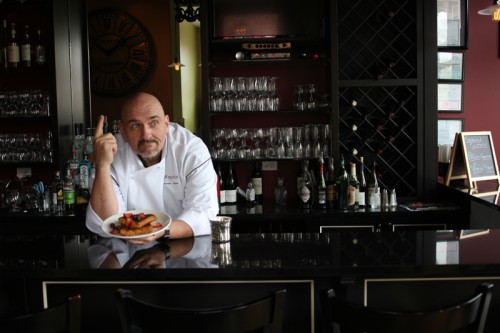
He plates the “toast”—though unlike any toast I have ever seen—and tosses some strawberries and blueberries on top of it, as if recalling the bushes and the round eggs (though not dark blue, I assume) of his youth. Finally, in a daring acknowledgement of his new American home, he drizzles it with a sauce derived from a maple tree. I can’t wait to try it.
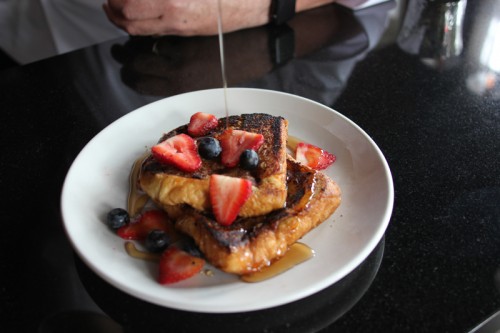
IT WAS THE SUMMER THAT I WAS 16, and I had never been so miserable in my life. I had just broken up with my girlfriend, and I was afraid that I would never have another one. Mainly because she told me that the girls all maintained a database of guys they went out with, and she had given me a one star rating that began, “I wanted to like Mike Gebert after hearing about him from other sophomores, but poor service and some basic execution flaws left me meh.” (Years later this system would be sold to the founders of Yelp.)
Seeking comfort in the only way I knew how, I stopped in at the House of Toast in my native Woonsocket. Even in my miserable state, I felt comforted by the half-hidden scent of burnt crumbs in the air. I took a seat at the counter. I knew there was only one thing that could take away my pain and replace it with a wiser understanding that in a world of pain and torment, there is also joy. Toast.
I ordered the all-you-can-eat toast special. I must have had 49 pieces of toast that night. For weeks, if I burped, I could smell rye. But with each crunch, with each spattering of blackened crumbs hitting my Pantera T-shirt like little particles of buttered Holy Communion, I felt a oneness with my fellow humans that let me know, there would be other loves. Other toasts.
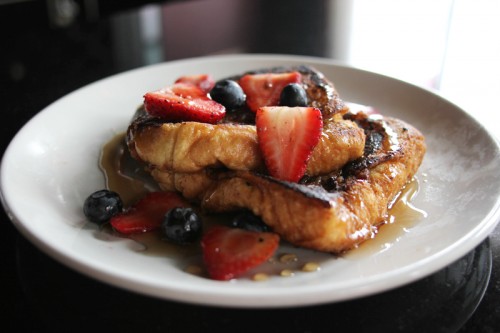
“WHAT DO YOU CALL IT?” I ask Dominique Tougne. “Does it have a name, like cronut?” I imagine the possibilities—Toastnut, Croissoast, Toastoeuf.
He looks at me with a pride that seems to reach back to his earliest memories of eating in his village. Perhaps he too had known a youthful heartbreak that could only be assuaged with toast.
“I call it in English, the French toast. It may start small here, this toast of mine, but you know that American breakfast place down the block?”
“Nookies?”
“I believe that someday, you may even see it on the menu there, too.”
French toast is available at brunch at Chez Moi, Saturday and Sunday.
Michael Gebert knows which side his bread is buttered on as the editor of Fooditor.
Latest
Join the Discussion
After you comment, click Post. If you're not already logged in you will be asked to log in or register with Disqus.




